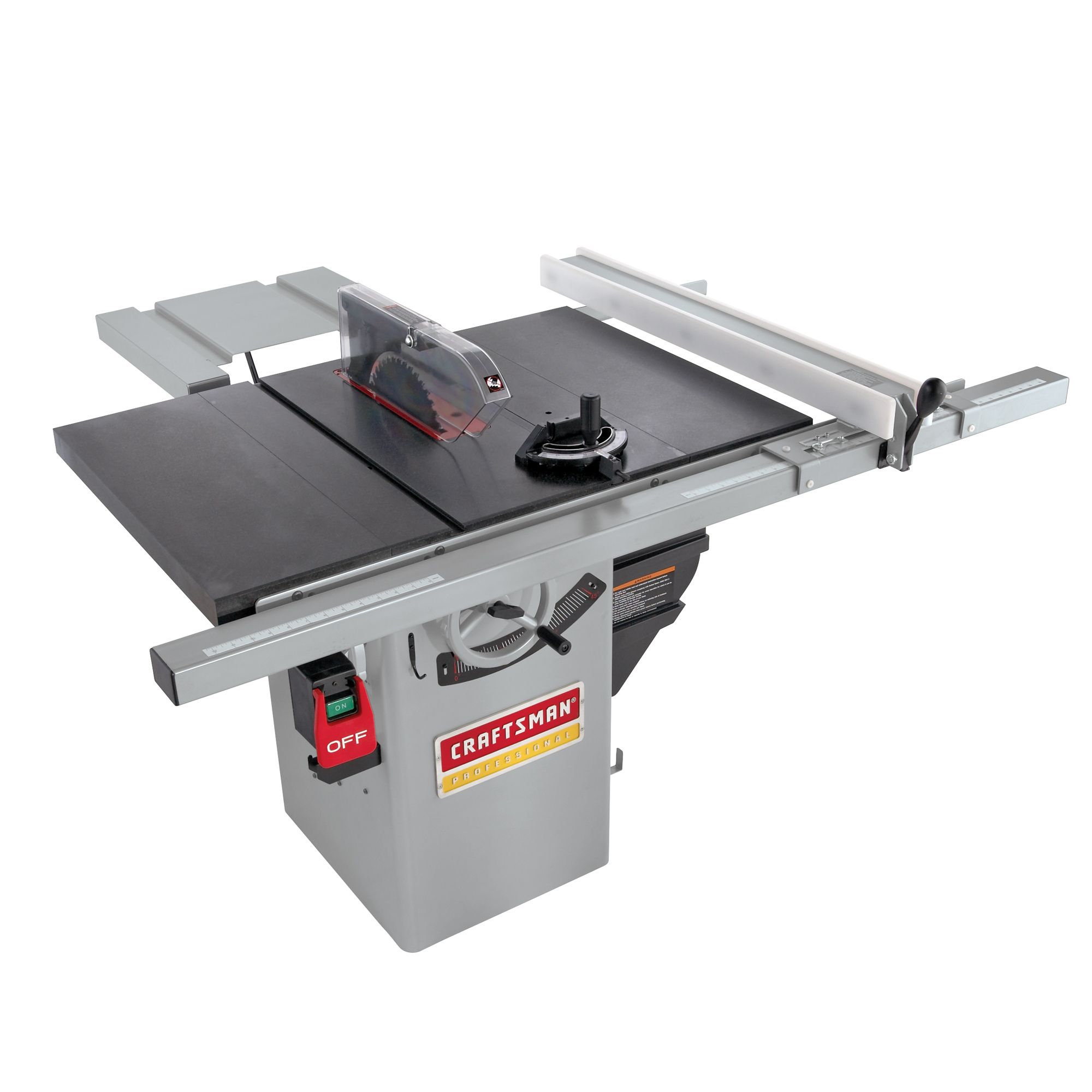Loading ...
Loading ...
Loading ...

• Tighten the two front adjustment screws (Key No. 18) until
they just touch the guide tube, and then back them off
about 1/4 turn. This should set the proper amount of play
in the fence.
• Check the fence movement. Readjust if needed.
RIP FENCE OPERATION
Refer to Figure 10.
• Unlock the fence by lifting the locking lever (Key No. 15).
Using the scale for placement, position the rip fence. Lock
the rip fence into position by placing the locking lever in
the down position.
• The rip fence is used for the following operations: ripping,
bevel ripping, ploughing, resawing, rabbeting and dadoing.
WARNING: For your own safety, always observe the follow-
ing safety precautions.
• Never make any cut freehand (without using miter gauge
or rip fence). Blade can bind in the cut and cause a kick-
back.
• Always lock miter gauge or rip fence securely when in use.
• Remove rip fence from the table when miter gauge is in
use.
• Remove miter gauge from table when rip fence is in use.
• Make sure blade guard is installed for all '_hru sawing"
operations. Replace guard immediately after completion of
resawing, rabbeting and dadoing.
Frequently check action of antikickback pawls by passing
the workpiece alongside the spreader while saw is off. Pull
the workpiece toward you. If the pawls do not dig into the
workpiece and hold it, the pawls must be sharpened. (See
Maintenance section, page 13.)
• Have blade extend approximately 1/81tabove top of work-
piece. Additional blade exposure increases hazard poten-
tial.
• Do not stand directly in front of blade in case of a kick-
back. Stand to either side of the blade.
• Keep your hands clear of the blade and out of the path of
the blade.
• If the blade stalls or stops while cutting, turn switch OFF
and safety disconnect OFF before attempting to free the
blade.
• Do not reach over or behind the blade to pull the work-
piece through the cut, to support long or heavy work-
pieces, to remove small cut-off pieces of material or for
any other reason.
• Do not pick up small pieces of cut-off material from the
table. Remove them by pushing them off table with a long
stick. Otherwise they could be thrown back at you by the
rear of the blade.
• Do not remove small pieces of cut-off material that may
become trapped inside blade guard while saw is on. This
could endanger your hands or cause a kickback. Turn saw
off. After blade has stopped turning, lift guard and remove
the piece.
• Always lower blade below the table level when machine is
not in use.
TYPES OF CUTS/OPERATIONS
CROSSCUTTING
Performed with miter gauge set at "0". Crosscutting is known
as cutting work across the grain at 90°, or square with both
the edge and the flat side of the wood.
MITER CUTTING
Performed with miter gauge, is known as cutting wood at an
angle other than 90° with the edge of the wood.
BEVEL CROSSCUTTING
Performed with miter gauge, is same as crosscutting except
that the wood is also cut at an angle other than 90° with the
flat side of the wood (blade is at an angle).
COMPOUND MITER CUTTING
Performed with miter gauge, is a combination of miter cutting
and bevel crosscutting. Cut is made at angle other than 90° to
both the edge and flat side of wood.
RIPPING
Performed with rip fence, is known as cutting a piece of wood
with the grain or lengthwise. Position the fence to the desired
width of rip and lock in place. When ripping long boards or
large panels always use a work support.
BEVEL RIPPING
Performed with rip fence, the same as ripping. However, blade
is set at an angle other than 90°.
RESAWlNG
Performed with rip fence, is known as ripping a piece of wood
through its thickness. Do not attempt to resaw bowed or
warped material.
NOTE: It may be necessary to remove blade guard and use
work supports as well as push blocks when performing this
operation.
WARNING: Install blade guard immediately upon completion
of resawing operation.
PLOUGHING
Performed with rip fence, is grooving with grain long way of
workpiece. Use proper hold downs and feed devices.
RABBETING
Performed with either miter gauge or rip fence. Rabbeting is
known as cutting out a section of the corner of a piece of
material, across an end or along an edge. To make a rabbet
requires cuts which do not go all the way through the materi-
al. Therefore, blade guard must be removed. Install blade
guard immediately upon completion of rabbeting operation.
Rabbet cuts can also be made using dado head.
DADOING
Performed with either miter gauge or rip fence. Dadoing is
done with a set of blades (dado set) rather than standard saw
blades. The dado set is used to groove wood similar to
ploughing and rabbeting. However, the dado set allows opera-
tor to remove more material in one pass. The operator, with a
dado set, can vary width of cut up to 1_,,.
Instructions for operating dado set are contained in owner's
manual furnished with dado set. Dadoing requires cuts which
do not go all the way through material. Therefore, blade guard
must be removed. Dado sets have different characteristics
than saw blades. As a result, saw must be fitted with special
parts that are available for saw (dado table insert).
12
Loading ...
Loading ...
Loading ...
